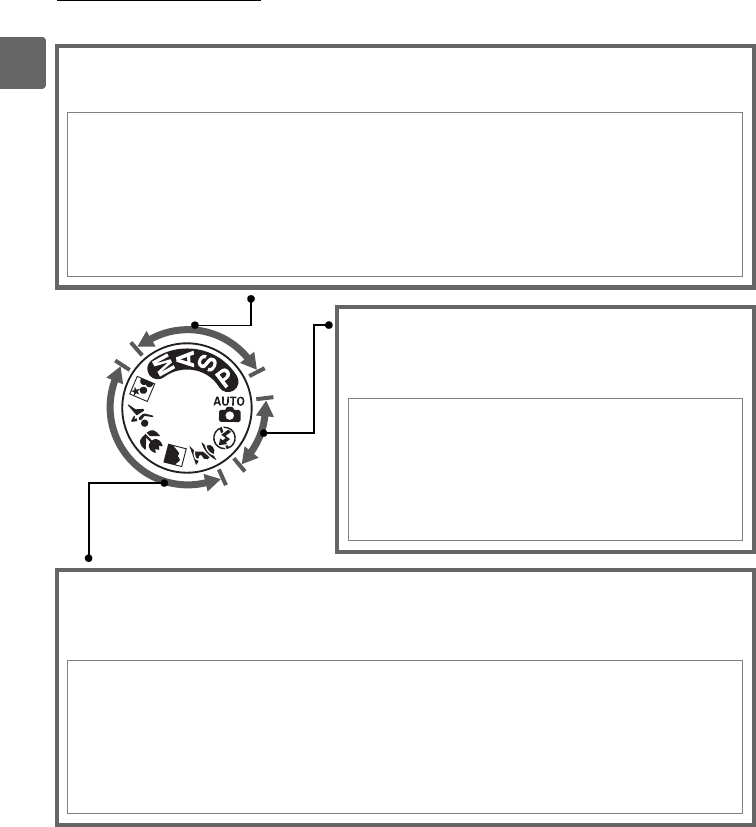
6
X
The Mode Dial
The camera offers a choice of the following eleven shooting modes:
❚❚P, S, A, and M Modes
Select these modes for full control over camera settings.
P—Programmed auto (pg. 80): Camera
chooses shutter speed and aperture, user
controls other settings.
S—Shutter-priority auto (pg. 81): Choose fast
shutter speeds to freeze action, slow shutter
speeds to suggest motion by blurring
moving objects.
A—Aperture-priority auto (pg. 82): Adjust
aperture to soften background details or
increase depth-of-field to bring both main
subject and background into focus.
M—Manual (pg. 83): Match shutter speed
and aperture to your creative intent.
❚❚Auto Modes
Select these modes for simple, point-and-shoot
photography.
i Auto (pg. 34): Camera adjusts settings automati-
cally to produce optimal results with “point-and-
shoot” simplicity.
Recommended for first-time
users of digital cameras.
j Auto (flash off) (pg. 34): As above, except that the
flash will not fire even when lighting is poor.
❚❚Scene Modes
Selecting a scene mode automatically optimizes settings to suit the selected
scene, making creative photography as simple as rotating the mode dial.
k Portrait (pg. 41): Shoot portraits with back-
ground in soft focus.
l Landscape (pg. 41): Preserve details in
landscape shots.
n Close up (pg. 42): Take vivid close-ups of
flowers, insects, and other small objects.
m Sports (pg. 42): Freeze motion for dynamic
sports shots.
o Night portrait (pg. 42): Shoot portraits
against a dimly-lit backdrop.


















